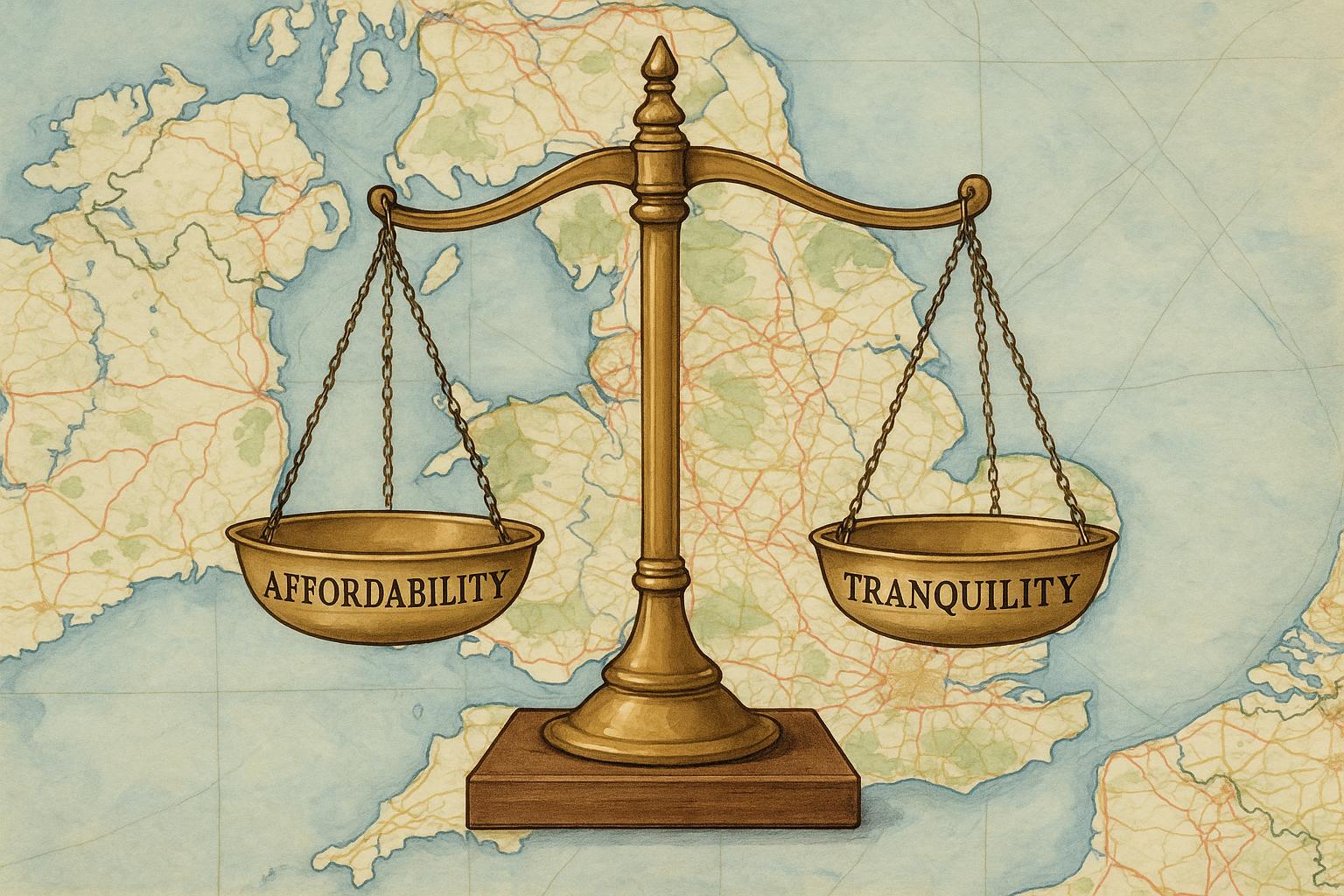Finding the ideal place to live remains a challenge for many homebuyers in the UK, as few towns or cities tick every box. Whether prioritising excellent schools, reliable railway connections, abundant green space, or high-speed broadband, sacrifices often have to be made. Additionally, areas excelling in all desired features often come with a hefty price tag, putting such locations out of reach for many families. A clever strategy is to identify the qualities most important to you that others might not prioritise, enabling you to find a sweet spot where you pay for what matters without overextending on non-essential features.
Money Mail has developed a new interactive calculator designed to help home seekers pinpoint their perfect neighbourhood by scoring eight key factors: housing market performance, disposable income, deprivation, crime rates, air quality, green space, broadband speed, and railway links. The tool draws on data from reputable sources including the Office for National Statistics, the 2021 Census, the Land Registry House Price Index, Institute for Fiscal Studies, and Ofcom. Users rate the importance of each factor, and the calculator suggests the top ten neighbourhoods, each with populations between 5,000 to 15,000, tailored to the user's preferences.
Looking at housing market growth—a vital factor for those viewing a home as an investment—Old Trafford in Greater Manchester leads with a remarkable 162.2% increase in prices since 2019, though prospective buyers must be tolerant of the noise from nearby sports stadiums. Other hotspots include Elswick South in Newcastle upon Tyne and Sheffield’s Highfield & Lowfield, both exhibiting over 140% growth. Conversely, buyers seeking bargains might consider Somers Town in north London, where prices have fallen nearly 48%, or Spennymoor East & Ferryhill West in County Durham. These contrasting trends exemplify how local conditions vary sharply across England.
Disposable income and deprivation provide further layers of context. Central London areas like Hans Town in Kensington and Chelsea boast the highest disposable incomes, with households having around £63,900 annually after taxes and housing costs. Meanwhile, some picturesque rural locations, such as Scholar Green in Cheshire, also rank highly for affluence. However, areas with low disposable income, like St Matthews and Highfields North in Leicester, offer more affordable housing options. It's important to note that some affluent areas coexist with pockets of deprivation, which are measured using a composite index of education, health, and employment factors. For example, Manchester’s Castlefield & Deansgate exhibits moderate income levels but ranks highly for low deprivation at 83%, highlighting that income alone does not equate to overall quality of life.
Safety remains paramount for many families. The East Yorkshire villages of Cherry Burton, Leconfield, and Middleton feature among the lowest crime rates, with just 13.6 incidents per 1,000 people, though house prices here average a premium of £356,733. By contrast, central London districts such as Soho register crime rates exceeding 3,000 per 1,000 residents, often linked to thefts impacting tourists rather than resident safety. Leeds city centre also reports relatively high crime but with more affordable housing, demonstrating the balance between cost and perceived security.
Environmental factors like air quality and green spaces increasingly influence decisions post-pandemic. Cumbria’s rural areas dominate air quality rankings, with extremely low levels of PM2.5 particles, while urban centres, especially London, occupy the lower tiers due to pollution. For lovers of nature, the Windsor and Eton area offers generous access to green spaces, averaging over 7,100 acres within one kilometre of households, a stark contrast to areas near Birmingham where green space can be minimal.
Broadband speed has emerged as an essential factor with the rise of remote working. Many neighbourhoods, including Bolehall in Staffordshire and Richmond in Sheffield, provide ultra-fast service at 1,000 Mbps, supporting simultaneous use by multiple devices. On the other hand, rural areas such as Todmorden West in West Yorkshire deliver more modest yet sufficient speeds of 100-300 Mbps for standard household usage.
Finally, railway connectivity plays a significant role for commuters returning to offices. Locations like Tynemouth Priory in Tyne and Wear offer perfect access with all homes within a 15-minute walk of a station. Conversely, rural locales like Cowes West on the Isle of Wight lack nearby stations but maintain strong property values, reflecting demand for serene, car-dependent living.
This new Money Mail tool joins a growing suite of platforms designed to assist in finding suitable neighbourhoods. Other UK-based services include Unmapt, which evaluates properties on safety, affordability, local amenities, and flood risk, offering side-by-side neighbourhood comparisons, and City Search, which provides detailed reports and visualisations on house prices, employment, schools, and crime across England and Wales. Liveable personalises recommendations based on affordability, commute, and safety, while PlaceClarity utilises a comprehensive Liveability Index covering rent affordability, transport, schools, and internet speed. NiceAreas provides a rich dataset for research, including crime predictors and school quality for informed moving decisions. Each of these platforms acknowledges the complexity of matching homes to lifestyle priorities in a diverse housing market.
The Covid-19 pandemic has reshaped many people's outlook on where and how they want to live. According to Yopa’s Love Where You Live Index, more Brits are prioritising access to green spaces, local job opportunities, and overall lifestyle quality. With nearly a quarter of the population reassessing their living arrangements, tools that help homebuyers identify neighbourhoods aligned with their unique preferences are more valuable than ever.
Together, these resources empower house hunters to navigate trade-offs intelligently, balancing budget constraints against quality-of-life factors. Whether seeking bustling urban centres or tranquil countryside retreats, buyers now have data-driven ways to find the perfect place tailored to their distinctive needs and values.
📌 Reference Map:
- Paragraph 1 – [1], [4]
- Paragraph 2 – [1]
- Paragraph 3 – [1]
- Paragraph 4 – [1]
- Paragraph 5 – [1]
- Paragraph 6 – [1]
- Paragraph 7 – [1]
- Paragraph 8 – [1]
- Paragraph 9 – [2], [3], [4], [5], [6]
- Paragraph 10 – [7]
Source: Noah Wire Services
